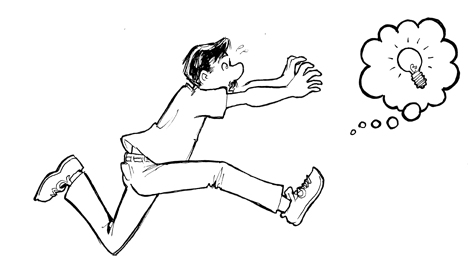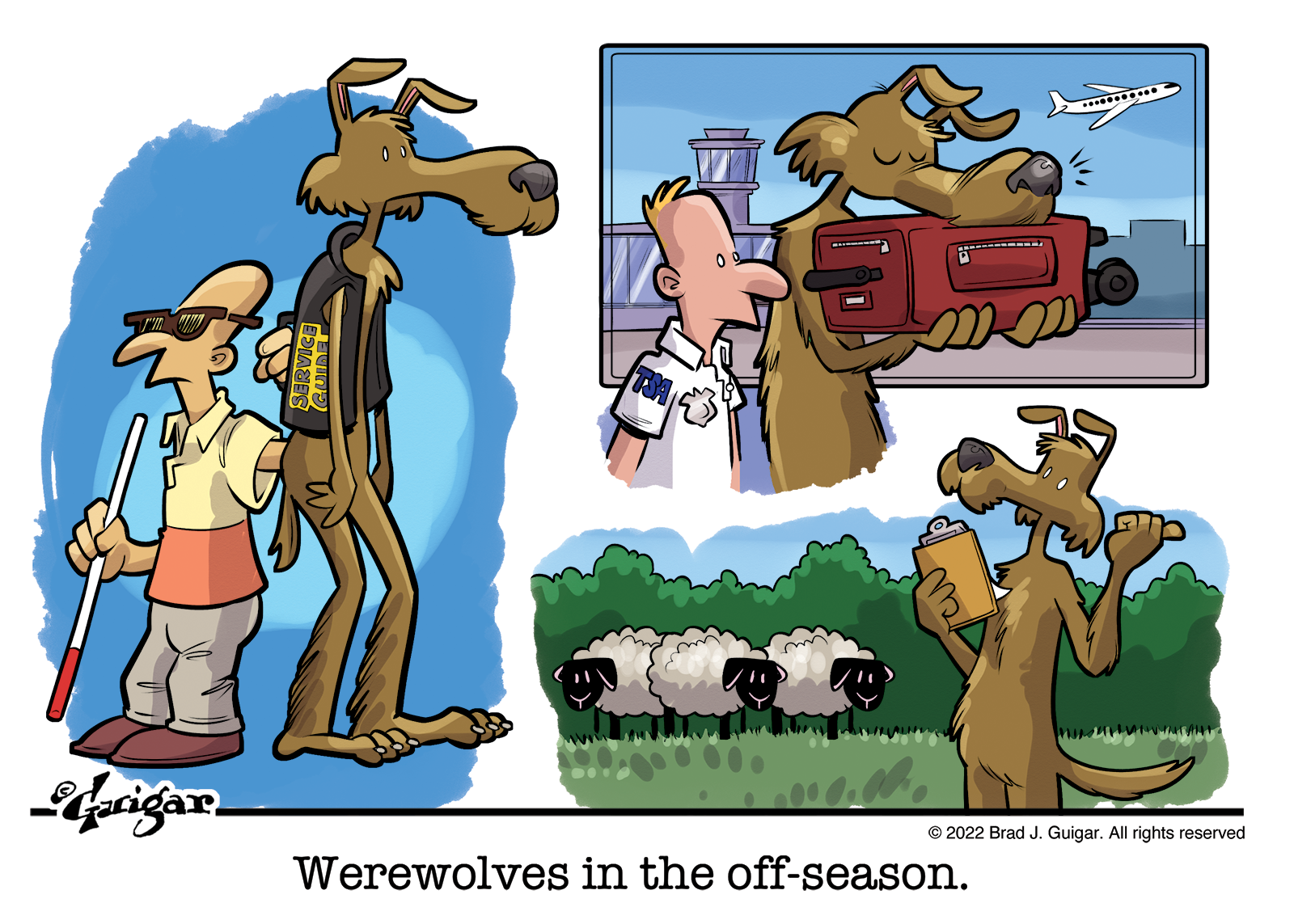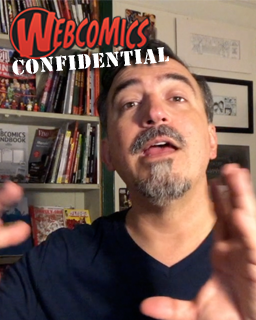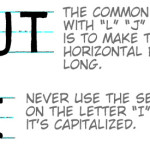Rethinking Longform Comics
When webcomics started out, longform creators felt like the ugly ducklings in the crowd. Many of them expressed the same complaint when I’d talk to them. They just didn’t feel as if the Web was the right place to present their work to its full strength. However, I think the Web— and its users — have both improved and matured to a point that longform comics not only can survive — but thrive — on new platforms (such as eComics).
But it kills me — kills me — when I see longform-comics creators continually trying to present their work in the “traditional” webcomic set-up that was heavily geared towards strips and other short-form comic. It’s a classic square peg scenario.
I think longform comics are on the cusp of a real revolution, and the artists who are going to best position themselves to take advantage of this will be the ones who will adapt their publishing approach to a new way of thinking.
Here are a few thoughts on where I think that new way of thinking should go.
Updates, not pages
Pages are the units of a book. Updates are the units of a Web site. The two are not interchangeable.
If you’re posting the pages of your book on the Web, I think you may be making a mistake (unless you’re planning those pages very carefully).
Your Web site itself (and the reading experience on a Web site) is not conducive to book-reading. And if you want your Web site to flourish, you’re going to have to create the best-possible reading experience on that site — not a book-reading experience that you shoe-horn into a Web site.
Make sense.
UPDATE = HALF-PAGE
Now there are a lot of ways to do this. I’m particularly fond of Scott Kurtz’s approach at Table Titans, and I strongly urge you to give it some thought. Every update is a half-page of the book he will later release. And every update has a significant element to it — a punchline, a plot hook, a cliff-hanger, etc. He writes the comic with the site/book polarity in mind. He knows that every update has to be important for the site, and he knows exactly how those updates fit into the overall book (top of page, end of right-hand page, etc.).
And this guides his writing. If he needs another update to make a two-page spread work right in the book, for example, he’ll do that. And he’ll make sure it’s significant for the site — at the same time that it fits into the storytelling of the book.
Challenging? Absolutely.
Impossible? Absolutely not. It’s just a new way of thinking about storytelling.
SLIDING SCALE UPDATE
Here’s another option: You simply release your graphic novel in significant updates. And if that means releasing two panels today and a page-and-a-half on the next scheduled update day, then that’s what it means.
This approach takes less planning in the writing stage — and allows you to keep the storytelling in the book “pure.” But it’s going to put you in a tight spot sooner or later as you run out of finished, significant updates to post.
FILLERS, SKETCHES, GUEST ART, ETC.
This is poison to the Web-reading experience. You fool yourself into believing that you had a post up for your readers that day — and, to an extend you kinda do. But that crap lives forever in your archive, taking readers out of the spell that you’re trying to weave as a storyteller.
Please don’t settle for this in leiu of doing a little planning and time management. You’re hurting yourself.
Landing page
I think a longform-comic creator should give seriosus consideration to instituting a landing page as the main page of their site. I go into this subject in greater detail here.
F/C/S
The Frequent/Consistent/Significant rule will always apply to a comic on the Web. There are no special dispensations for longform comics. Every update has to be updated as frequently as it possibly can be, while maintaining consistency (of quality and schedule) and significance of each, individual update.
That’s another challenge — to the writing for sure — and to the comics-creation process overall.
But here’s where I think the payoff is…
Digital downloads
Digital tablets are so widespread as to make them almost an assumed possession among our readers.
And it’s so freaking easy to sell digital downloads — either independently, through sites like SendOwl and Gumroad, or through online distributors such as ComiXology and DriveThruComics — that you literally don’t have an excuse to avoid it any longer.
A longform-comic Web site, therefore, should be set up in such a way that readers (even new ones) instantly understand the following:
- This is a longform comic on the Web.
- Navigation buttons will allow the reader to jump from update to update — and also from chapter to chapter.
- If the reader is intrigued enough by what they’re reading on the Web, they can easily read archival content (and perhaps even the rest of the current chapter) by buying a digital download.
That’s the user experience you have to set up — in the first screen view of your site.
Again, that’s going to take some planning — and some excellent time-management skills. But I think there’s a way that longform creators can make this work.
The longform publishing cycle
What I see as a possibility is a publishing cycle that (a) identifies the time-constraint placed on the callenges I laid out above, and actually (b) builds in the extra time needed to make this happen. Here’s the cycle:
PLANNING
The book is planned, plotted, and outlined. You know where the story is going conceptually, but more importantly, you know how many updates you have (and, on the other side of the coin, how many pages you’ll have for your impending book/digital download). You don’t have to have every last word written, and there’s a little room for wiggle, but you have a strong outline against which you can plan your approach.
And since you have a plan, you can now determine:
- Update schedule
- Time needed to build a buffer to carry you through the publishing cycle
- Soft publication date for your digital download
- Soft publication date for your printed book (if that’s in your business plan)
LAUNCH
Once you’re ready, you now launch your longform comic. You make an announcement. You hit inbound social media* as hard as you can. You send preview comics and press-releases out to sites that cover comics news. And you have reader-grabbing updates in place to… well… grab those readers your driving to your site.
* Your Twitter feed, your Facebook page, etc… all sending traffic “inbound” to your Web site.
PUBLISHING
This looks more like “traditional” webcomics publishing. You have ads on the site to generate income. You’re facilitating social-media evangelists through outbound social-media buttons (ones that allow users to share your work with their friends). You’re facilitating comments and other Community Building aspects of webcomics. You’re running a webcomic, except…
PUSH THE DIGITAL DOWNLOAD
…where a traditional webcomic would encourage readers to dive through the archives, you’re making sure they know they can read previous chapters (or even previous books, issues or volumes) by purchasing digital downloads. These links are prominent, and your “message” on the site, social media, etc. reinforces this fact.
CONSIDER THE PRE-RELEASE
Of course, if you’re updating on the fly, you’re getting updates finished just in time for publication on your Web site. But if you’ve planned ahead, you can offer interested readers the entire chapter (or book) as a digital download — which includes the stuff that’s already appeared on the site as well as the rest of the content they haven’t seen online, all the way to the end of the chapter/book/etc.
THE FINALE
At the grand finale, we have the completed piece (chapter/book/etc.) available as a digital download. If a printed version of the comic is in your plans, this is when you launch the Kickstarter. You have a product in hand, a dedicated reader base, and a clear path to your product. These are all important ingredients to a successful crowd-sourcing campaign.
DORMANCY
And now you go dormant. Well, not completely dormant, but the activity on your site slows down. You convert it from an active webcomic to a storefront for your digital download(s). Make sure there’s a message explaining when the next live content will begin appearing on the site. And you can even post teasers for the next round with sketches, etc — as long as they’re not included in your comic’s archive.
During the “dormancy” period, you go back to “PLANNING” and start the entire process over again.
You won’t be getting as much ad revenue, but as you’re doing the planning, you should also be focused on selling that chapter/book that you’ve created, and that’s going to be the revenue stream that sustains you during “dormancy.” You’ll be pushing the content out through all of the channels you can, too — ComiXology, DriveThruComics, apps, etc. And, of course, the Kickstarter money for the book — and the subsequent sales of that book. All of this is your revenue during “dormancy.”
Then you do the whole thing over again.
What do you think?
Now, obviously, there is a wide range of longform comics, and this probably won’t apply to some. However, I think there are elements there that could apply to all of them. And there are creative people who will take that framework and run with it.
But that’s my thoughts on running a longform comic on the Web. What are yours?
A subscription to Webcomics.com is only $2.50 a month when you subscribe for a year. Not sure? Try out the site risk-free for five bucks.
For more reading…
Here’s an alternate approach to longform comics that you should consider…



















